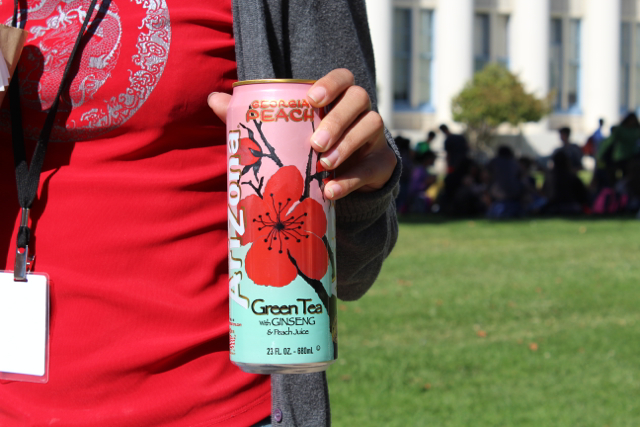In California, soda sales have been banned in elementary and middle schools since 2006 and in high schools since 2009, but a loophole in the state education code allows the sale of electrolyte replacement beverages, otherwise known as sports drinks, in high school cafeterias, vending machines, snack bars and other on-campus venues. That loophole will close on July 1, 2014, when new regulations from the U.S. Department of Agriculture take effect to ban the sale on school campuses of sugary sports and energy drinks that have more than 40 calories in 8 ounces or 60 calories in 12 ounces.
“That means your typical 20-ounce Gatorade won’t be in schools,” said Margo Wootan, director of nutrition policy at the Center for Science in the Public Interest, a nonprofit organization.
Some 65 percent of adolescents drink at least one sugary sports drink or soda a day, an 8 percent jump since an earlier survey tracking consumption habits, researchers said.
Sodas, sport drinks should be "treats," advocates say
Given the close association between daily sugary beverage consumption and obesity, the rise is cause for alarm for schools that are working to address the effects of obesity on student attendance, self-esteem and health.
“California has made real progress in reducing the consumption of sugary beverages among young children,” said Susan Babey, the report’s lead author. “But teens are in trouble.”
She said sodas and sports drinks should be regarded as occasional “treats,” not part of a daily meal plan.
The study’s most encouraging finding was that young children are consuming markedly fewer sugary beverages. About 19 percent of 2- to 5-year-olds drink a sugary beverage every day, the study said, a 30 percent decline since the earlier survey. Among 6- to 11-year-olds, 32 percent are daily consumers, down 26 percent since 2005-2007.
The study was based on data collected in the California Health Interview Survey, the nation’s largest state health survey. Researchers completed interviews with more than 40,000 households.
Snapshot from one "open campus" high school
Still, banning the beverages from schools won’t stop teenagers from finding the drinks. Some 75 percent of high school campuses in California are “closed” and don’t allow students to leave the grounds without supervision during the school day. “It’s the 25 percent we need to worry about it,” said Wootan at the Center for Science in the Public Interest.
At Oakland Technical High School – which has an open campus policy allowing students to leave during lunch – many students sitting on the front lawn at lunchtime Thursday drank from water bottles, while other students returned from local stores with pizza and sugared beverages, including Arizona iced tea, Shasta Cola and a 7-11 Slurpee.
Many were well aware of the amount of sugar they were consuming, but didn’t feel it was a serious problem. One student said bottled water was more expensive than his canned iced tea.
“I buy it because it tastes good,” said Will, a freshman carrying a can of Shasta Cola.
His friend, Ethan, had a 23.5-ounce can of Arizona Green Tea containing 51 grams of sugar. “This has a lot of sugar, but it’s better than soda,” Ethan said. “It’s Arizona and it’s green tea.”
Public perception may hold that iced teas and fruit drinks are a better choice than sodas, yet high concentrations of sugar in the beverages make them something to consume in moderation, experts said.
The counties with the largest declines in percentage of youth drinking soda or other sugary beverages every day included Ventura County, with a 37 percent decrease since 2005; Yuba County, with a 32 percent decrease; and Napa County, with a 31 percent decrease.
Counties with the largest increase in daily sugary drink consumption among youth of all ages were Lake County, with a 36 percent increase; Monterey County, with a 29 percent increase; and Solano County, with a 24 percent increase.
